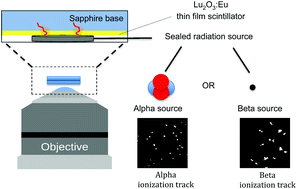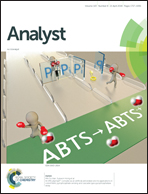Development and characterization of a scintillating cell imaging dish for radioluminescence microscopy†
Abstract
Radioluminescence microscopy is an emerging modality that can be used to image radionuclide probes with micron-scale resolution. This technique is particularly useful as a way to probe the metabolic behavior of single cells and to screen and characterize radiopharmaceuticals, but the quality of the images is critically dependent on the scintillator material used to image the cells. In this paper, we detail the development of a microscopy dish made of a thin-film scintillating material, Lu2O3:Eu, that could be used as the blueprint for a future consumable product. After developing a simple quality control method based on long-lived alpha and beta sources, we characterize the radioluminescence properties of various thin-film scintillator samples. We find consistent performance for most samples, but also identify a few samples that do not meet the specifications, thus stressing the need for routine quality control prior to biological experiments. In addition, we test and quantify the transparency of the material, and demonstrate that transparency correlates with thickness. Finally, we evaluate the biocompatibility of the material and show that the microscopy dish can produce radioluminescent images of live single cells.



 Please wait while we load your content...
Please wait while we load your content...